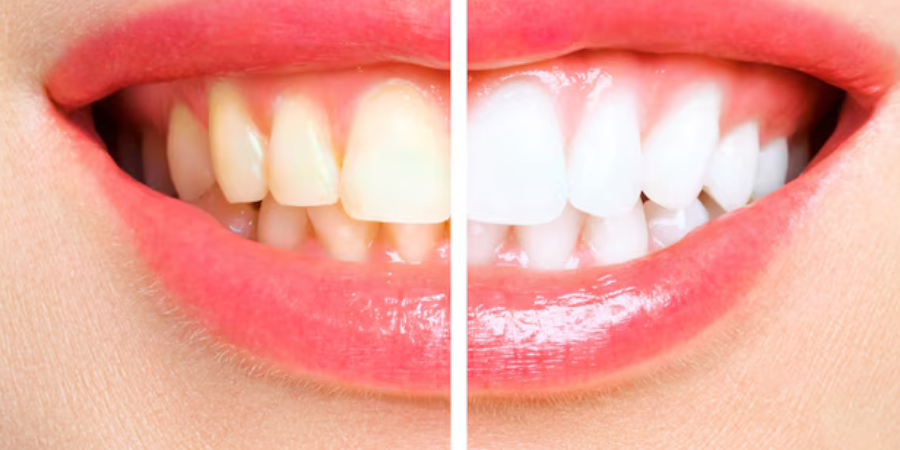Teeth whitening is a popular cosmetic procedure designed to enhance the brightness of your smile. With numerous options available, it is crucial to understand the process, benefits, and potential risks involved. This comprehensive guide provides everything you need to know before starting your teeth whitening journey.
Understanding Teeth Whitening
Teeth whitening is a process that involves removing stains and discoloration from the teeth to achieve a brighter, more youthful appearance. The primary goal is to enhance the aesthetic appeal of your smile, which can have a positive impact on self-esteem and overall confidence. Whitening treatments can be broadly categorized into two types: in-office treatments and at-home treatments.
In-Office Whitening Treatments
In-office whitening treatments are performed by dental professionals and typically involve the use of high-concentration bleaching agents. These treatments are highly effective and can produce significant results in a single visit. Common methods include:
- Zoom Whitening: This popular procedure uses a hydrogen peroxide gel activated by a special light. It can lighten teeth by several shades in about an hour.
- Laser Whitening: In this method, a laser is used to enhance the whitening effect of the bleaching agent, leading to quicker and more dramatic results.
- Chairside Whitening: A dentist applies a whitening gel to the teeth and uses a curing light to accelerate the whitening process.
At-Home Whitening Treatments
At-home whitening treatments offer convenience and can be less expensive than in-office procedures. These treatments include:
- Whitening Toothpastes: These contain mild abrasives and chemicals that help remove surface stains. They are less effective than other methods but can maintain results.
- Whitening Strips: These are thin, flexible strips coated with a peroxide-based gel. They are applied directly to the teeth and can produce noticeable results over a few weeks.
- Whitening Gels and Trays: Custom-fitted trays are filled with a bleaching gel and worn over the teeth for a specified period. This method can achieve results similar to in-office treatments but may take longer.
Choosing the Right Whitening Option
Selecting the most suitable whitening treatment depends on various factors, including your dental health, budget, and desired results. Here are some considerations:
Dental Health and History
Before starting any whitening treatment, it’s essential to have a thorough dental examination. Dentists will assess your oral health, identify any existing issues like cavities or periodontal disease, and ensure that whitening will not exacerbate these conditions.
Desired Results
Consider how much whitening you wish to achieve. For minor stain removal, at-home treatments might suffice. For more dramatic results, in-office treatments may be more appropriate.
Sensitivity Concerns
Whitening treatments can sometimes cause temporary tooth sensitivity. If you have sensitive teeth or gums, discuss this with your dentist. They may recommend desensitizing products or suggest alternative methods.
The Whitening Process
Understanding the teeth whitening process helps set realistic expectations and ensures you achieve the best possible results.
Preparation
Preparation for whitening involves a professional cleaning to remove plaque and tartar. This ensures that the whitening agent can effectively contact the tooth surface.
Application
In-office treatments involve applying a whitening gel to the teeth and using light or laser technology to activate the gel. At-home treatments require the application of whitening products according to the manufacturer’s instructions.
Post-Treatment Care
After whitening, it’s crucial to follow post-treatment care guidelines. Avoid foods and drinks that can stain your teeth, such as coffee, tea, and red wine. Maintaining good oral hygiene practices will help prolong the results.
Maintaining Your Results
Teeth whitening is not permanent, and maintaining a bright smile requires ongoing care. Here are some tips for maintaining your whitening results:
Good Oral Hygiene
Brush your teeth at least twice a day and floss daily to remove plaque and prevent stains. Use whitening toothpaste to help maintain your results.
Regular Dental Checkups
Visit your dentist regularly for checkups and cleanings. Professional cleanings can help remove surface stains and keep your teeth looking their best.
Avoid Staining Foods and Drinks
Limit your consumption of foods and drinks that can cause stains. If you do consume them, brush your teeth soon after to minimize staining.
Potential Risks and Side Effects
While teeth whitening is generally safe, it is essential to be aware of potential risks and side effects:
Tooth Sensitivity
Temporary tooth sensitivity is a common side effect of whitening treatments. This usually subsides after a short period, but if sensitivity persists, consult your dentist.
Gum Irritation
Bleaching agents can sometimes irritate the gums. If you experience significant discomfort, discontinue use and seek advice from your dentist.
Uneven Results
Teeth with fillings, crowns, or veneers may not whiten uniformly. Discuss your options with your dentist to address these concerns.
Teeth whitening can dramatically enhance your smile and boost your confidence. By understanding the different treatment options, preparing for the process, and maintaining good oral hygiene, you can achieve and sustain a bright, beautiful smile. Always consult with a dental professional to ensure that you choose the most appropriate treatment for your needs and to address any concerns.

